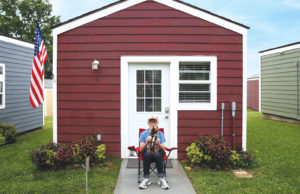WASHINGTON — Most economists agree the nation’s deep
recession is over, but that isn’t bringing much cheer to retailers. For the
second consecutive holiday season, they’re bracing for declining sales.
“We’re expecting (holiday) sales to be down 1 percent
this year, which, believe it or not, represents a stabilizing of the (retail)
industry,” said Scott Krugman, a spokesman for the National Retail
Federation, the trade group for major retail chains.
Many retailers suffered through a year-over-year drop in
sales of at least 3 percent last holiday season, so this year isn’t expected to
be as bad. That’s a sign of how bad the U.S. economy has been: Less bad now
passes as good news for retailers.
“They’re not looking for anything great,” said
William Dunkelberg, the chief economist for the National Federation of
Independent Business, whose members include smaller, stand-alone retailers.
“We still have more firms that think that over the next few months their
retail sales volume will fall rather than rise. That’s not a good sign.”
Retailers have slashed costs and reduced inventory
throughout the year and enter the peak holiday season lean, both in staffing
and in the stockroom. Still, the aggressive cost cutting, inventory reduction
and staff downsizing won’t mean anything unless customers open their wallets.
“This year retailers went into the season with their
eyes wide open. Consumers are still hibernating, we have double-digit
unemployment, housing is still very much in flux and consumers will need a lot
of incentive to come out and shop,” Krugman said.
Retailers, he said, plan to provide lots of incentives on
the day after Thanksgiving, or “Black Friday,” the traditional start
of holiday shopping. To create buzz, retailers are said to be preparing
“door buster” specials that range from $3 small appliances,
high-definition televisions for less than $300 and GPS devices for automobiles
for less than $60.
“We know this season’s Black Friday will be more
promotional than ever,” Mike Boylson, the executive vice president and
chief marketing officer of J.C. Penney & Co., said in a statement that
accompanied third-quarter earnings Nov. 13.
Even with the promotional push, J.C. Penney told analysts
that the company expects sales in the final three months of this year to drop 3
percent to 5 percent below last year’s final quarter.
Toys R Us stores are opening their doors seconds after
midnight on Black Friday in a bid to provide shoppers with access to deals
“five hours earlier than ever before,” the company announced last
Thursday, adding that it would offer 70 “door busters” in the very
first hour of Black Friday.
For all the hype, Black Friday is just one day in the
holiday season. Surveys of consumers confirm why retailers expect such a
challenging year. In its annual survey of holiday intentions, the National
Retail Federation found in late October that 84.2 percent of Americans expect
to spend less this holiday season. They’re expected to spend an average of
$682.74, a drop of 3.2 percent over last year.
Given such stark realities, any surprise this season would
be on the upside, since consumers have spent the past 18 months paying down
their debt and bolstering their savings in case they join the one in 10
working-age Americans who are without jobs. There could be a suppressed demand.
“There’s still an element of unknown,” Krugman
said.
Maybe. When reporting their third-quarter earnings, however,
some of the largest retail establishments lowered expectations.
“In light of the current and projected economic
environment and expectations for a highly promotional holiday season, Target
remains cautious about fourth-quarter performance and is planning
conservatively,” the company said in a statement Nov. 17.
Retail consultants such as Ted Hurlbut, a Boston-based
consultant on retail sales strategy, aren’t betting on a December surprise.
“I don’t see anything out there that suggests to me
otherwise,” he said, pointing to volatile indicators of consumer sentiment
and an especially tough season for smaller, independent retailers. “I’m
not seeing anything that suggests there’s an upside surprise.”
For many larger retail chains, the strategy this year is
called “managed scarcity,” making items scarce so that less product moves
but at a higher price.
“Customers are going to be sent the message that you’d
better buy it, because it may not be here when you turn around,” Hurlbut
said. “The theory is that it’s going to prop up prices because the
merchandise won’t be discounted as much as it was” last year.
For retailers who offer seasonal clothing, that plan
translates into fewer units for sale per style, Hurlbut said. The goal is to
have higher profits on a lower volume of sales, without a huge amount of
merchandise left over that has to be deeply discounted in January.
“I think you might start to see more (newspaper) pieces
about the second or third week (of the shopping season) that customers can’t
find stuff,” he said.
Via McClatchy-Tribune News Service.














